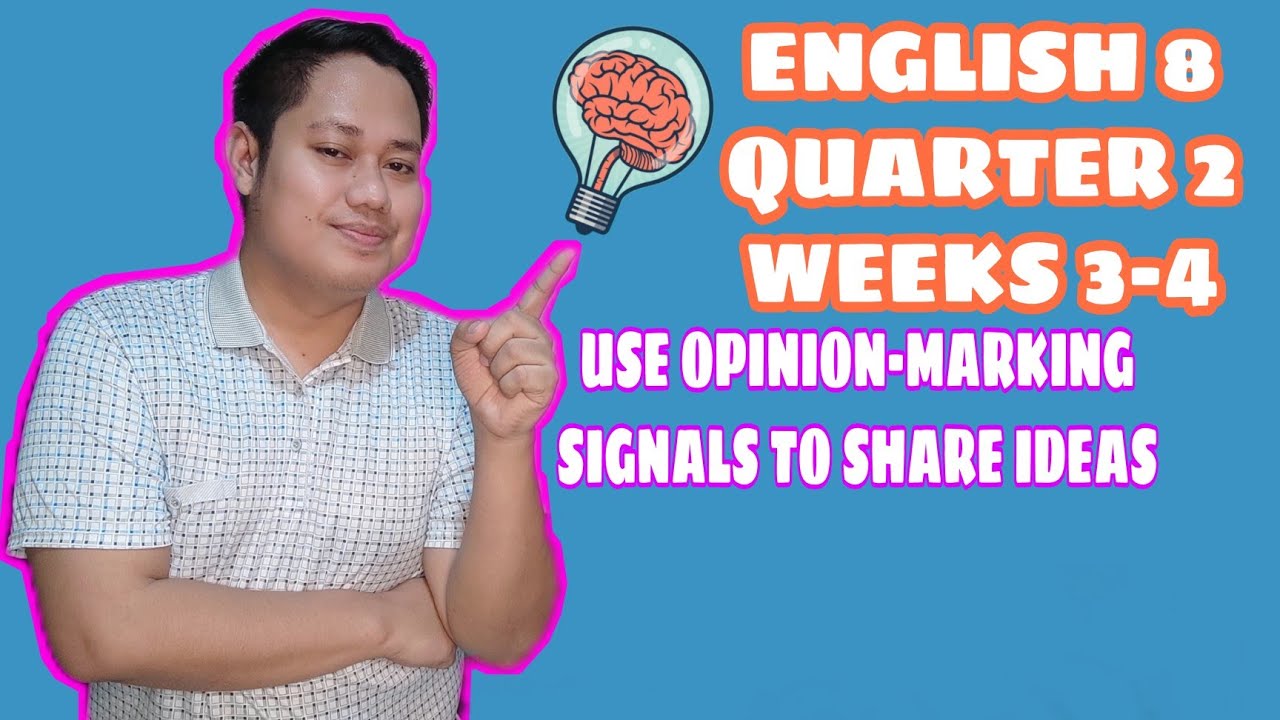ENGLISH 8 QUARTER 2 WEEK 1 EXPLAIN VISUAL-VERBAL RELATIONSHIPS (TABLES,GRAPHS,INFORMATION MAPS)
Summary
TLDRIn this English lesson for Grade 8 students, Sir Marvin introduces the topic of charts, graphs, and maps. The lesson covers various types of visual tools like bar graphs, line charts, pictographs, and concept maps, emphasizing their purpose in organizing and illustrating information, especially in expository texts. Through a fun pictogram game, students learn to interpret visual representations, followed by a pre-test to assess their knowledge. The lesson also discusses the importance of communication, both verbal and non-verbal, and its role in conveying information effectively.
Takeaways
- 🎯 The lesson is designed for Grade 8 learners and focuses on differentiating tables, graphs, and maps, and selecting appropriate charts to represent data.
- 🧩 A pictogram or rebus puzzle game is used to teach learners how to depict hidden meanings in images.
- 📊 Students are expected to learn how to choose the most suitable graph or chart to represent information visually.
- 💬 The teacher introduces the concept of communication, highlighting the importance of both verbal and non-verbal forms.
- 📖 Expository texts are introduced as a method to present information clearly, often supported by visual tools like graphs and charts.
- 📈 Different types of graphs are explained, including circle graphs (also known as pie charts), bar graphs, picture graphs, and line charts.
- 🔍 The lesson emphasizes the use of visual aids, like tables and graphs, in organizing and presenting data effectively to enhance understanding.
- 📉 The difference between vertical and horizontal bar graphs is explained using examples like the number of school enrollees over the years.
- 🔗 Concept maps are introduced as a tool to show relationships between ideas, helping organize information visually.
- ✅ The importance of selecting the correct type of graph or chart for presenting specific data is underscored as key to effective communication.
Q & A
What are the objectives of today's English lesson for Grade 8?
-The objectives include differentiating tables, graphs, and maps in terms of their purpose in varied text types like expository text and choosing the most appropriate chart or graph to illustrate information.
What is the 'pictogram game' or 'rebus puzzle game' mentioned in the lesson?
-The pictogram game or rebus puzzle game involves interpreting images to depict hidden meanings. For example, a picture with the words 'stand' and 'eye' with an underline is interpreted as 'I understand.'
What is an example of a pictogram explained in the lesson?
-An example is the pictogram 'split personality,' where the word 'personality' is visually split, representing the idea of having more than one personality.
What is the correct answer to the question, 'It is also commonly referred to as a pie chart?'
-The correct answer is 'd, circle graph.'
How does the lesson define communication?
-Communication is the act of transferring information from one person to another, either verbally or non-verbally. It helps people express their ideas, thoughts, and emotions while also understanding others' feelings.
What are the two types of communication mentioned?
-The two types of communication are verbal communication (using words and language) and non-verbal communication (using facial expressions, gestures, eye contact, and body postures).
What is the purpose of using graphics or visual tools in expository texts?
-Graphics and visual tools in expository texts are used to show information and facts in a way that helps readers better understand the concepts being presented.
How does a circle graph (or pie chart) help in data presentation?
-A circle graph divides data into fractions that represent different portions of a whole. For example, it can show favorite desserts of children, with the largest fraction representing ice cream as the most favorite.
What is a bar graph, and what can it represent?
-A bar graph uses bars to show data, either vertically or horizontally. It can represent different categories or numerical values, such as the number of enrollees in different school years.
Why is it important to choose the appropriate graph or chart for data presentation?
-Choosing the appropriate graph or chart ensures that the data is presented in a clear and understandable way, helping readers or viewers easily interpret the information.
Outlines

此内容仅限付费用户访问。 请升级后访问。
立即升级Mindmap

此内容仅限付费用户访问。 请升级后访问。
立即升级Keywords

此内容仅限付费用户访问。 请升级后访问。
立即升级Highlights

此内容仅限付费用户访问。 请升级后访问。
立即升级Transcripts

此内容仅限付费用户访问。 请升级后访问。
立即升级浏览更多相关视频

ENGLISH 8 QUARTER 2 WEEK 3-4 USE OPINION-MARKING SIGNALS TO SHARE IDEAS

Statistika Kelas 8 [Part 1] - Menganalisis Data

Statistika part #1~ PJJ Matematika Kelas XII #diagrambatang #diagramlingkaran #diagramgaris

How to talk about charts and graphs in English (advanced English lessons)

Kurikulum Merdeka Materi Matematika Kelas 7 Bab 6 Data dan Diagram

Video Pembelajaran Matematika Kelas 7 SMP ( Pengolahan Data )
5.0 / 5 (0 votes)
